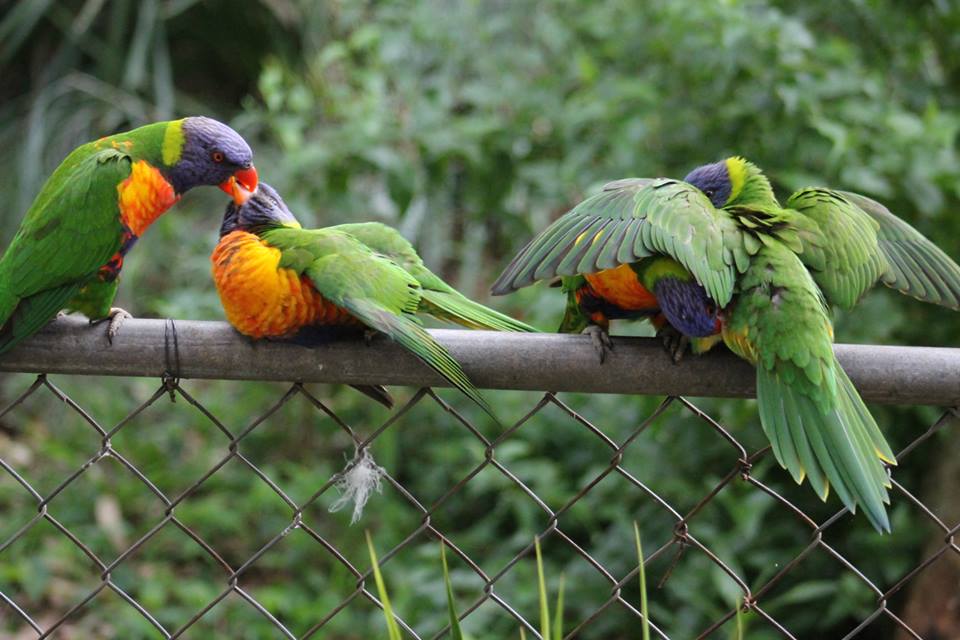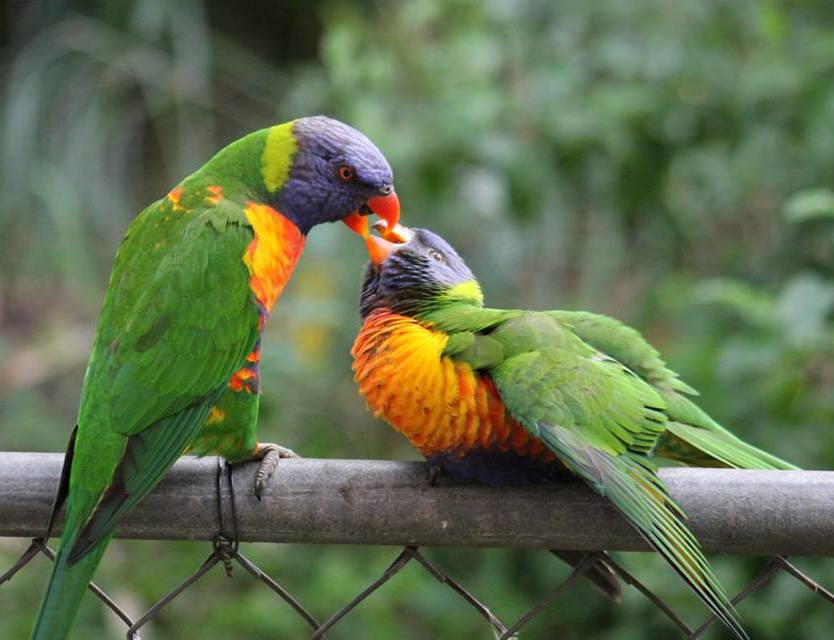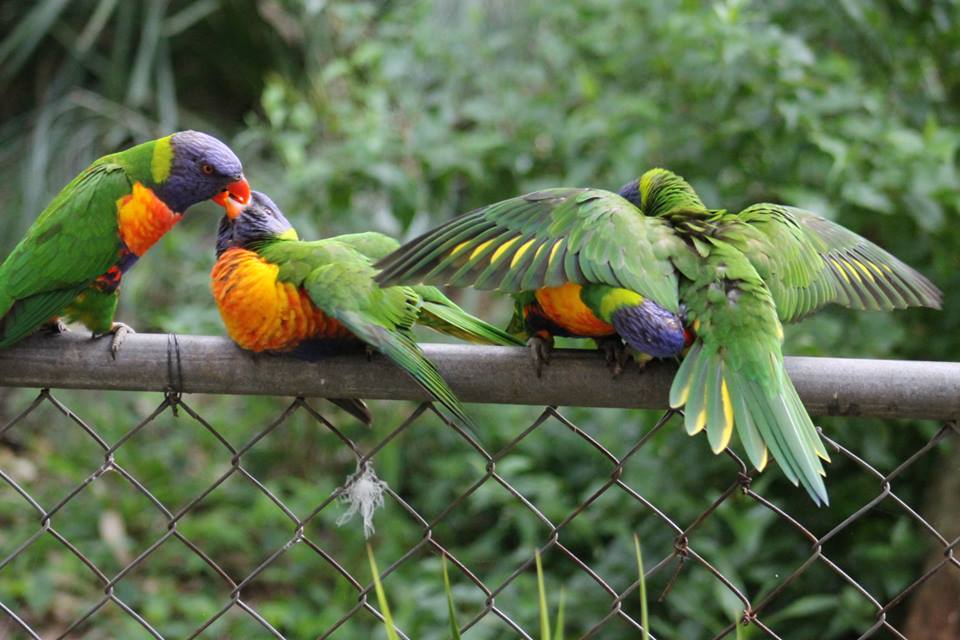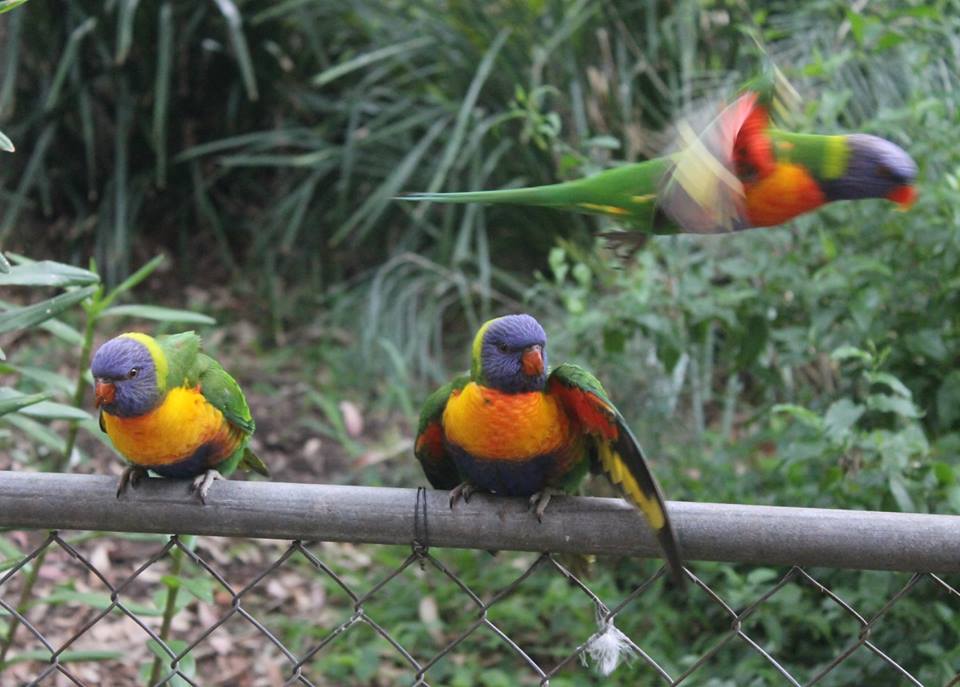September 13 - 19, 2015: Issue 231
Baby Birds Spring 2015
Rainbow Lorikeets in our Yard

Baby Birds Spring 2015 - Rainbow Lorikeets
We have groves of tall Spotted Gums (Corymbia maculate) in our yards here, with families of currawongs, magpies, kookaburras and rainbow lorikeets that have homes in these.
There is a family of possums – one of which brought us twins to show last Spring, and a family of bandicoots we can hear squeaking away around the house after dusk.
Mopokes will sound softly through the night and a powerful owl often sits on the fence outside the desk’s window during the long nights when we’re finishing the Issue to bring you some news each week.
One of the families of birds that have as their home the trees here are these two lorikeets who bring us their babies twice each year to show us why they’ve not been hopping around the window ledges squawking cheery good mornings.
For the past few weeks they have been bringing this pair to the office window to show us, and noisy they are too, always wanting to be fed or groomed. We have seen their beaks go from a darker colour to this more orange colour and their wing feathers go from being shorter fluffier versions, where they are really flapping hard to do little flights. They are considered to be ‘juveniles’ when able to fly like this or when their beak colour gradually changes to orange.

Being fed!
A bit about these colourful birds:
The rainbow lorikeet (Trichoglossus moluccanus) is a species of parrot found in Australia. It is common along the eastern seaboard, from northern Queensland to South Australia and Tasmania. Its habitat is rainforest, coastal bush and woodland areas.
Rainbow Lorikeets are classed as true parrots.
True parrots have a beak with a characteristic curved shape, the jaw with a mobility slightly higher than where it connects with the skull, and a generally upright position. They also have a large cranial capacity and are one of the most intelligent bird groups. They are good fliers and skillful climbers on branches of trees.
Some species can imitate the human voice and other sounds, although they do not have vocal cords - instead possessing a vocal organ at the base of the trachea known as the syrinx.
Like most parrots the Psittacidae are primarily seed eaters. There is some variation in the diet of individual species, with fruits, nuts, leaves and even insects and other animal prey being taken on occasion by some species. The lorikeets are predominately nectar feeders; many other parrots will drink nectar as well. Most Psittacidae are cavity nesting birds which form monogamous pair bonds.
Rainbow lorikeets often travel together in pairs and occasionally respond to calls to fly as a flock, then disperse again into pairs. Rainbow lorikeet pairs defend their feeding and nesting areas aggressively against other rainbow lorikeets and other bird species. They chase off not only smaller birds such as the noisy miner, but also larger and more powerful birds such as the Australian magpie. (1.)
There will be lots of baby and juvenile birds out and about in coming weeks – if you see them, or hear them, have a closer look at how fluffy they are when young. If you find them on the ground, where some may have fallen from their nests, ask an adult to pick them up and get them to someone who may be able to help feed them or restore them to their homes.
If you want to help our local wildlife you, and see them playing in your yard, you can place a dish of water out for them to drink from, or a bird bath for them to bathe in, and plant more native species which they can eat seeds and nectar from.
________________________________
1. Rainbow lorikeet. (2015, September 5). In Wikipedia, The Free Encyclopedia. Retrieved from https://en.wikipedia.org/w/index.php?title=Rainbow_lorikeet&oldid=679652764

